Impact windows are a common option for homeowners and real estate developers. As the demand for resilient and long-lasting building materials rises.
Improving safety and preventing damage are impact windows’ main objectives. This makes many people curious about the price tag on these windows.
In this post, we will walk you through all the elements that affect impact windows’ prices. Let’s get started!
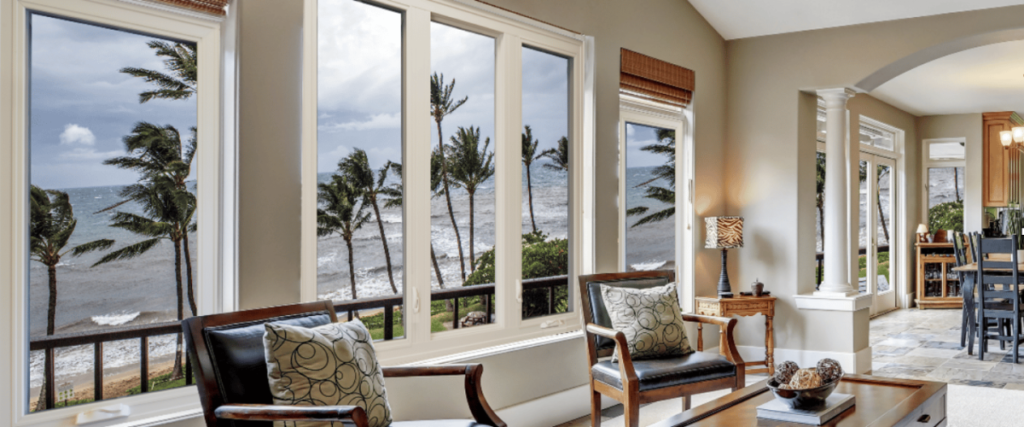
What are Impact Windows, and How do they work?
Impact windows, are often referred to as hurricane windows or storm windows. Manufacturers create these are windows to withstand the force of flying objects. And strong winds during severe weather events. The design of these windows is to offer increased safety and protection. Especially for buildings in hurricane-prone locations. Or areas with harsh weather conditions. With the usage of laminated glass and a sturdy frame in the manufacturing process.
Impact windows, as opposed to conventional windows, are made to withstand shattering. Even when struck by flying debris. Hence, minimizing damage and potential injury from flying glass. Impact windows are primarily used to protect the integrity of a building’s envelope. And stop wind and rain from penetrating the building.
Impact windows are able to withstand severe weather forces. Due to testing and certification. To ensure that they adhere to strict requirements and building codes. Because there is a clear interlayer between the glass layers, they are made to be sturdy. Even if the outer layer of glass cracks. The glass shards are held together by this interlayer. Which is commonly constructed of polyvinyl butyral (PVB). Keeping them from separating. And hence, lowering the possibility of shards flying into the interior space.
Material Choices
Impact windows frequently have frames constructed of strong materials. Like aluminum, vinyl, or fiberglass. Which offer stability and strength to support the impact-resistant glass. These substances have been picked because of their resistance to the pressures. Pressure that debris and strong winds can exert.
Impact windows can provide additional advantages in addition to their safety qualities. They also offer improved security. Due to the laminated glass’s difficulty in being broken through. Against forced entrance. Additionally, impact windows provide greater energy efficiency, noise reduction, and UV protection.
Investing in impact windows is a wise decision. Especially if your property is located in a region prone to hurricanes, powerful storms, or severe weather. In addition to offering long-term advantages like potential insurance premium discounts. And raised resale value, they offer peace of mind, safeguard property and occupants. And prevent them from harm.
Types of Impact Windows
Impact windows come in a variety of varieties. With different shapes and functions to suit the demands and preferences of homeowners. Here are a few popular impact window types:
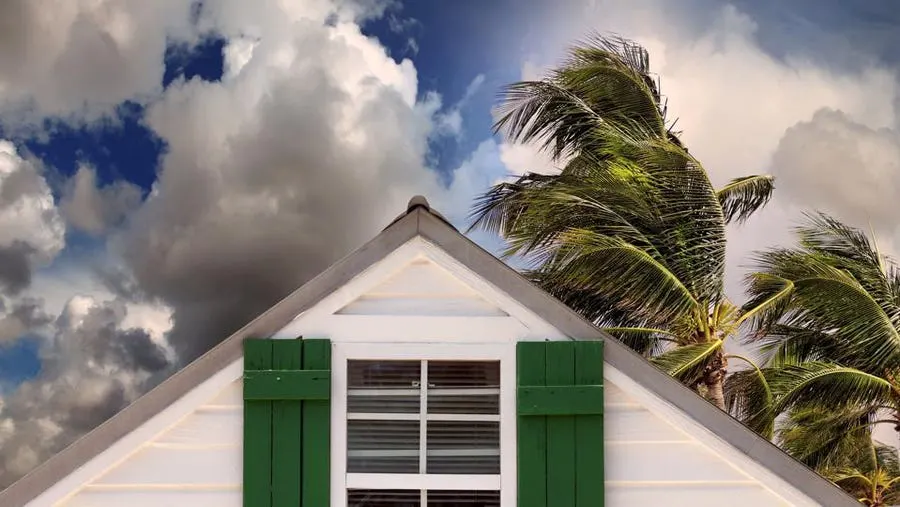
Single Hung Windows:
Single-hung impact windows have two sashes. The bottom sash of which can slide vertically while the top sash is fixed in place. The ease of use and low cost of these windows make them a popular option. They offer ventilation options while delivering good impact protection.
Double Hung Windows:
Double-hung impact windows have top and bottom sashes. These sashes are both movable and function similarly to single-hung windows. Greater control over ventilation and airflow is made possible by this feature. Double-hung windows offer increased impact protection, are adaptable, and are simple to clean.
Impact casement windows:
Impact casement windows can open outward like doors because they have hinges on one side. When closed, these windows provide a tight seal. Which greatly increases their energy efficiency. Unobstructed vistas and optimum ventilation are provided via casement windows. They are appropriate for places where maximum airflow and simple operation are sought.
Window Awnings:
Similar to casement windows, awning impact windows can expand outward. From the bottom, thanks to hinges on the top. This structure’s design produces the appearance of an awning. While still allowing for ventilation and rain protection. Awning windows have become very popular nowadays. Due to their adaptability and usefulness for both residential and commercial uses.
Sliding Glass Doors:
Another type of impact window is frequently utilized for wider openings. And access to outdoor regions are sliding glass doors with impact-resistant characteristics. One or more panels make up these doors, and they move horizontally on tracks. They offer simple operation, plenty of natural light, and improved security. There are many different configurations of sliding glass doors. Including two-panel and multi-panel versions.
Windows that are fixed:
Picture windows that are fixed for impact do not open or close. They are made to offer unrestricted vistas and make the most of natural light. Fixed windows are frequently utilized. In places where ventilation is not a major concern. In conjunction with movable windows or as architectural features.
It’s vital to remember that various window kinds may vary. Based on manufacturers and particular product lines. In terms of design, frame materials, and other features. Homeowners should speak with window experts or suppliers.
What Factors Affect Impact Window Costs?
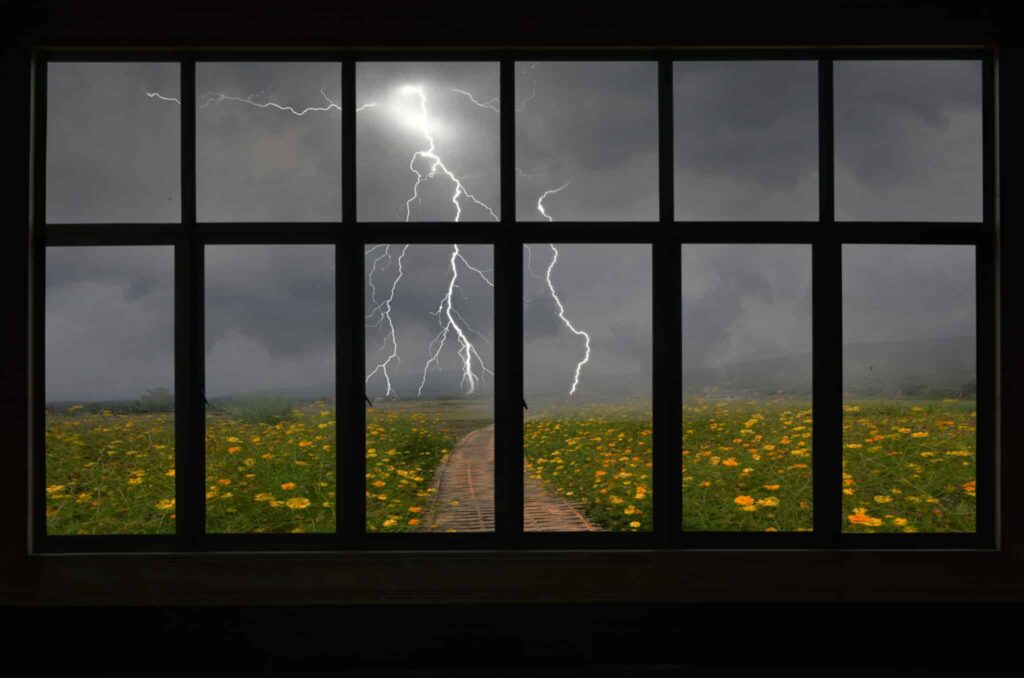
Impact windows might cost more or less depending on a number of variables. Homeowners can make informed judgments. And plan their budgets more effectively, by being aware of these aspects. The following are the main variables that affect impact window costs:
Window Dimensions and Design:
Impact windows’ dimensions and design have a big impact on how much they cost. Larger windows can cost more since they require more work and materials. Minly during construction and installation. Additionally, non-standard sizes and bespoke shapes could raise the entire cost. Larger or oddly shaped impact windows would demand specific manufacturing procedures. Or extra reinforcing. Which would eventually increase costs.
Materials:
Impact windows’ performance and price are impacted by the materials they are made of. Two important factors are the type of glass utilized and the frame material.
Choosing the Frame Material:
Impact windows’ frames are constructed of fiberglass, vinyl, or aluminum. Aluminum frames are strong and long-lasting while still being relatively light. Vinyl frames require less maintenance and offer outstanding insulating qualities. Fiberglass frames combine durability, energy efficiency, and strength. The choice of frame material will affect how much the windows will cost overall. With fiberglass frames frequently being the most expensive option.
Glass:
The cost is also influenced by the type and caliber of the glass used in impact windows. Impact windows must have laminated glass. Which is made up of many layers with a polyvinyl butyral (PVB) interlayer. The price can be impacted by differences in the glass’s thickness and layer count, though. Cost-related factors can also include extra features like tinting or low-emissivity (low-E) coatings.
Features that Improve Energy Efficiency:
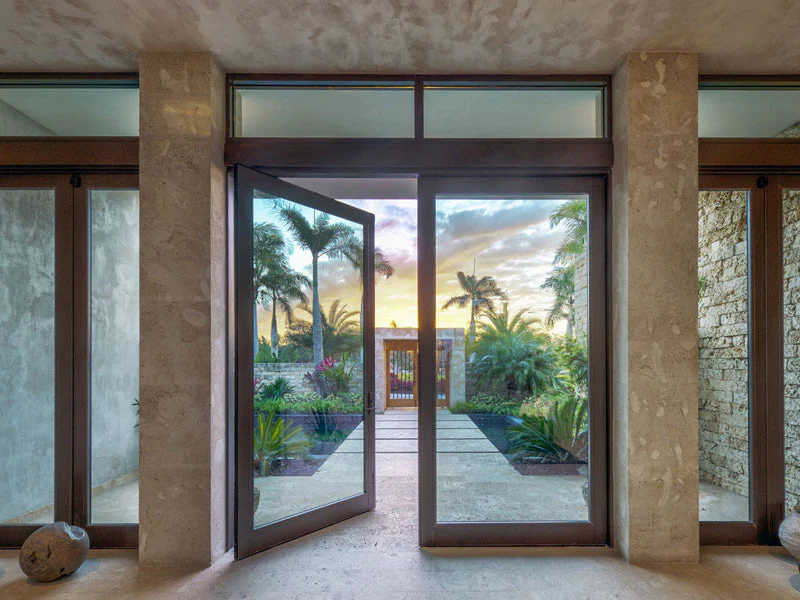
Impact windows with improved energy efficiency features may cost more. Features such as argon gas fills or low-E coatings between the glass panes, enhance insulation. And lessen heat transfer. Which may lead to energy savings. Even though they might be more expensive initially. But they can save money on heating and cooling costs. Especially in the long run.
Design and aesthetics:
Impact windows can cost more overall. Especially if they have customized designs, decorative glass alternatives, or particular hardware finishes. Although they could cost more, these aesthetic aspects improve the windows’ aesthetic attractiveness. Impact windows might cost more than ordinary options. Especially if they have attractive glass patterns or unique hardware finishes.
Installation Complexity:
The installation’s complexity may have an impact on the final price. Factors such as the quantity of windows, the site’s height and accessibility. And the existence of architectural elements can all have an impact. On how much labor is required for installation. The overall costs may also increase. If any alterations or structural reinforcements are necessary during installation.
Market factors and location:
The cost of windows can be affected by the property’s location. Local building codes, permit costs, labor expenses, and market rivalry. Are just a few variables that can differ from region to region. Where specialist talents or materials are needed. Or where there is a great demand, prices could be higher.
Manufacturer and Contractor:
The cost of impact windows might also vary. Depending on the manufacturer and contractor chosen for the project. Depending on their brand reputation. The caliber of their products. and the warranties they provide, various manufacturers may provide a range of prices. The charges that contractors charge for their services can also vary. Depending on their experience and level of skill.
Homeowners must speak with window experts. Compare prices, and take into account the unique requirements of their house. To find the ideal balance of features and pricing for their impact windows.
Impact Windows Types and Price Ranges:
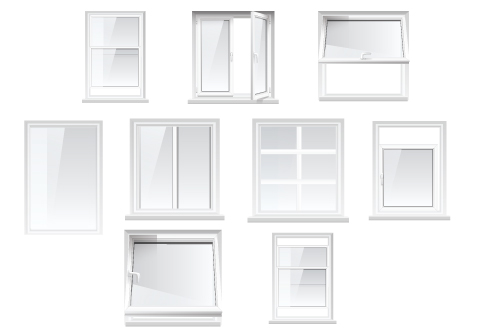
The price of single-hung and double-hung windows might vary. Depending on the size, materials they are made of, energy saving features, and location. The breakdown of these window designs’ typical price ranges is as follows:
1- Single Hung Windows
Single hung windows have two sashes. The bottom sash of which can swing vertically and the top sash of which is fixed in place. For ventilation, the lower sash can be raised while the top sash stays in place. Single-hung windows are common because they are easy to use and affordable.
Impact single hung windows typically cost between $500 and $1,500 per window. Materials and installation included. It’s crucial to keep in mind, though, that these costs can change. Depending on the window’s size, frame material, glass type, and extra features. This range might be exceeded by larger or specially made single hung windows.
2- Double Hung Windows
Windows with a double hung configuration can be opened from both the top and bottom. Unlike single hung windows. Greater control over ventilation and airflow is made possible by this feature. Flexibility in opening is provided by the ability to raise or lower both sashes. Double hung windows offer increased impact protection. Are adaptable, and are simple to clean.
Impact double hung windows normally cost between $500 and $1,500 per window. Including materials and installation. Which is comparable to the cost of single hung windows. Price variations are possible, much like with single-hung windows. depending on the size, kind of glass, frame material, and additional amenities.
It’s critical to remember that these price ranges are only estimates. They may vary. Depending on factors such as geographic location, market conditions. Customization possibilities, and contractor pricing. It is advised to speak with window experts. Acquire many estimates from reliable manufacturers or contractors. Think about the precise specifications and financial limitations of your project. And evaluate the pricing information for single hung or double hung impact windows.
3- Casement Windows
Two common window designs are casement and awning windows. Which are renowned for their usefulness and aesthetic appeal. Impact windows with casements or awnings can be more expensive or less expensive. Depending on the size, materials used, energy efficiency features, location, and customisation possibilities. The price ranges for these window designs are listed below in general terms:
Casement windows have a single-sided hinge and swing open like doors. They are very energy-efficient since they have great airflow and a tight seal when closed. Casement windows are renowned for their adaptability. And are appropriate for many different types of architectural designs. Impact casement windows typically cost between $600 and $1,800 per window. Installation included.
– The size of the window,
– The frame material (such as aluminum, vinyl, or fiberglass),
– The type of glass (such as laminated with low-E coating). And any additional features (such as decorative grids) can all affect the actual cost.
The availability of customization options and certain market circumstances. Might also affect the final cost.
4- Awning Windows
Awning windows are similar to casement windows. But have hinges at the top, allowing them to open outward from the bottom. This design creates an awning-like effect. Providing protection from rain while still allowing for ventilation. Awning windows are commonly used in combination with other window styles. Or as standalone options. Mainly in areas where easy operation and maximum airflow are desired.
The average cost for impact awning windows generally falls within the same price range. As casement windows. Between $600 and $1,800 per window, including installation. As with casement windows, the final cost can vary. Depending on factors such as window size, frame material, glass type, energy efficiency features. And any additional customization options.
5- Sliding Glass Doors
Sliding glass doors—also known as patio doors or sliding patio doors—are a popular option. For homeowners seeking to optimize natural light. They also help create seamless transitions between indoor and outdoor spaces. And allow simple access to patios, decks, or backyard areas. These doors operate smoothly and easily. Thanks to one or more panels that glide horizontally on rails. Sliding glass doors may also have impact-resistant qualities. These qualities protect you from bad weather.
Impact-resistant sliding glass doors offer durability, security, and aesthetic appeal. They can include additional features. Like sidelights or transoms to name a few. They come in a variety of forms, like two-panel or multi-panel designs.
Impact sliding glass doors typically cost between $1,500 and $4,000. Or more each, not including installation.
– The size of the door,
– The frame material (such as aluminum, vinyl, or fiberglass),
– The type of glass (such as laminated with low-E coating),
– The design options (such as grids, decorative patterns),
– Energy efficiency features (such as argon gas fills, low-E coatings) can all affect the actual cost.
The availability of customization options and market conditions also affect the ultimate cost.
It’s also important to keep in mind that larger or more complicated arrangements. Like multi-panel or gigantic sliding glass doors, might be more expensive. It’s a good idea to include in any additional installation costs. Such as those associated with removing the old door. Making any required structural changes, and making sure the installation is properly sealed. And weatherproofed.
The Bottom Line
Impact windows are a worthwhile investment. For homeowners looking to improve safety and safeguard their house. From extreme weather conditions. Impact windows are more expensive than standard windows at first glance. But over time they end up being more cost-effective due to their benefits. Their benefits include:
– Safety,
– Energy efficiency,
– Potential insurance premium discounts,
– Enhanced property value, and
– Peace of mind.
The size and shape of the windows, the materials used for the frames and glass. Energy efficiency features, design and aesthetic alternatives, installation difficulty, location-specific factors. And the manufacturer and contractor chosen all have an impact on the price of impact windows. When planning a budget for impact windows, it’s crucial to take these aspects into account. As they add to the pricing unpredictability.
